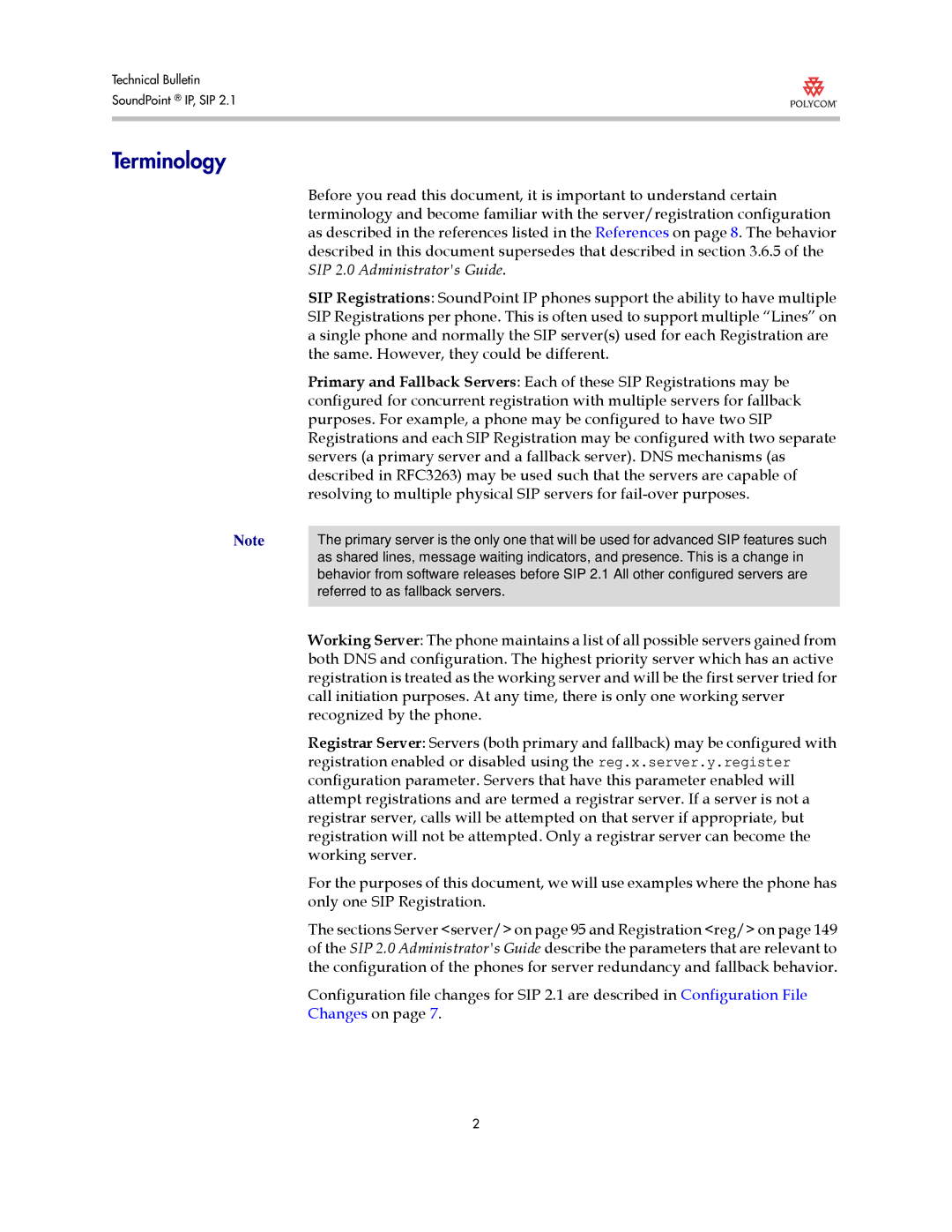Technical Bulletin
SoundPoint ® IP, SIP 2.1
Terminology
| Before you read this document, it is important to understand certain |
| terminology and become familiar with the server/registration configuration |
| as described in the references listed in the References on page 8. The behavior |
| described in this document supersedes that described in section 3.6.5 of the |
| SIP 2.0 Administrator's Guide. |
| SIP Registrations: SoundPoint IP phones support the ability to have multiple |
| SIP Registrations per phone. This is often used to support multiple “Lines” on |
| a single phone and normally the SIP server(s) used for each Registration are |
| the same. However, they could be different. |
| Primary and Fallback Servers: Each of these SIP Registrations may be |
| configured for concurrent registration with multiple servers for fallback |
| purposes. For example, a phone may be configured to have two SIP |
| Registrations and each SIP Registration may be configured with two separate |
| servers (a primary server and a fallback server). DNS mechanisms (as |
| described in RFC3263) may be used such that the servers are capable of |
| resolving to multiple physical SIP servers for |
Note |
|
The primary server is the only one that will be used for advanced SIP features such | |
| as shared lines, message waiting indicators, and presence. This is a change in |
| behavior from software releases before SIP 2.1 All other configured servers are |
| referred to as fallback servers. |
|
|
| Working Server: The phone maintains a list of all possible servers gained from |
| both DNS and configuration. The highest priority server which has an active |
| registration is treated as the working server and will be the first server tried for |
| call initiation purposes. At any time, there is only one working server |
| recognized by the phone. |
| Registrar Server: Servers (both primary and fallback) may be configured with |
| registration enabled or disabled using the reg.x.server.y.register |
| configuration parameter. Servers that have this parameter enabled will |
| attempt registrations and are termed a registrar server. If a server is not a |
| registrar server, calls will be attempted on that server if appropriate, but |
| registration will not be attempted. Only a registrar server can become the |
| working server. |
| For the purposes of this document, we will use examples where the phone has |
| only one SIP Registration. |
| The sections Server <server/> on page 95 and Registration <reg/> on page 149 |
| of the SIP 2.0 Administrator's Guide describe the parameters that are relevant to |
| the configuration of the phones for server redundancy and fallback behavior. |
| Configuration file changes for SIP 2.1 are described in Configuration File |
| Changes on page 7. |
2
